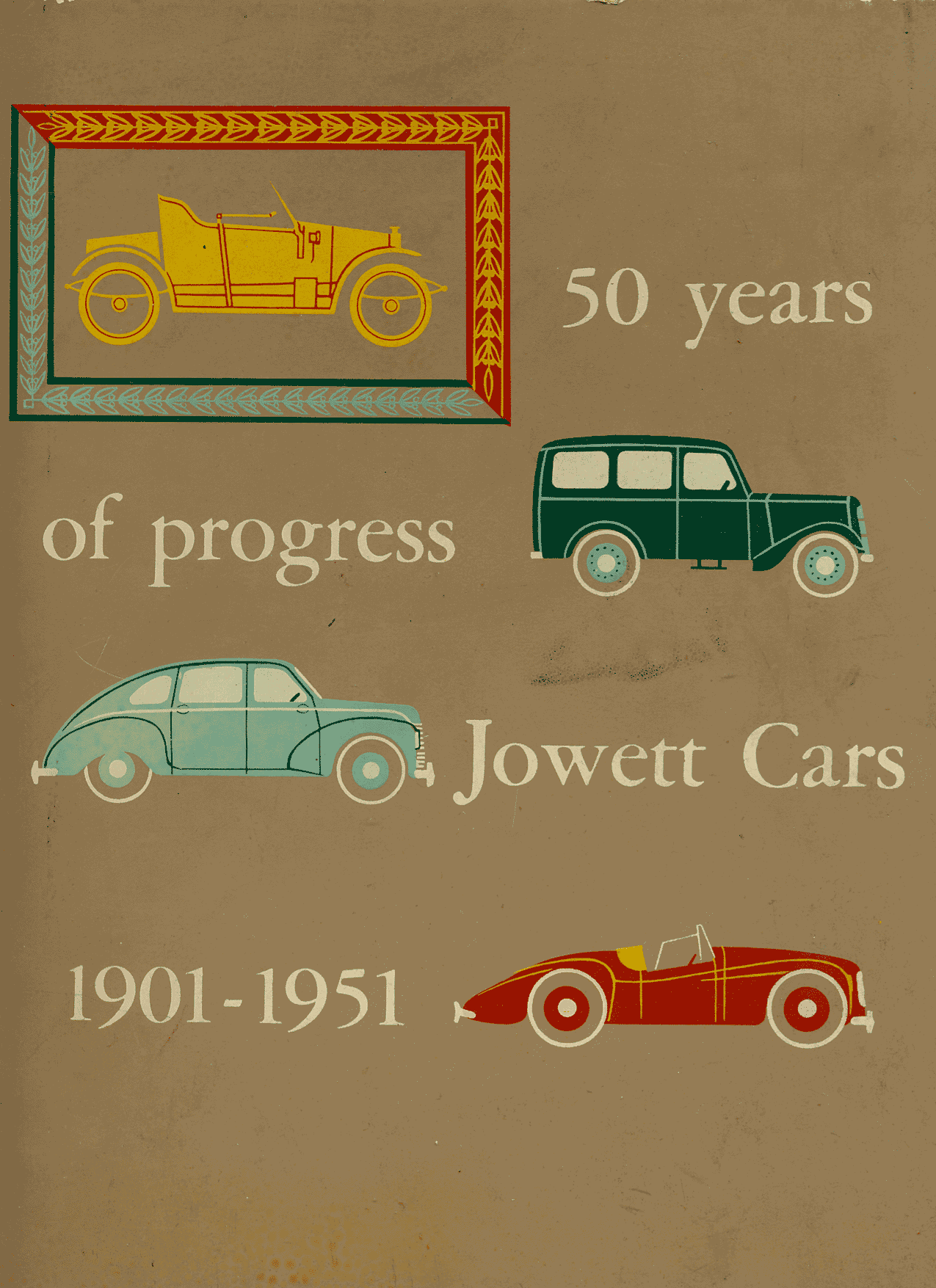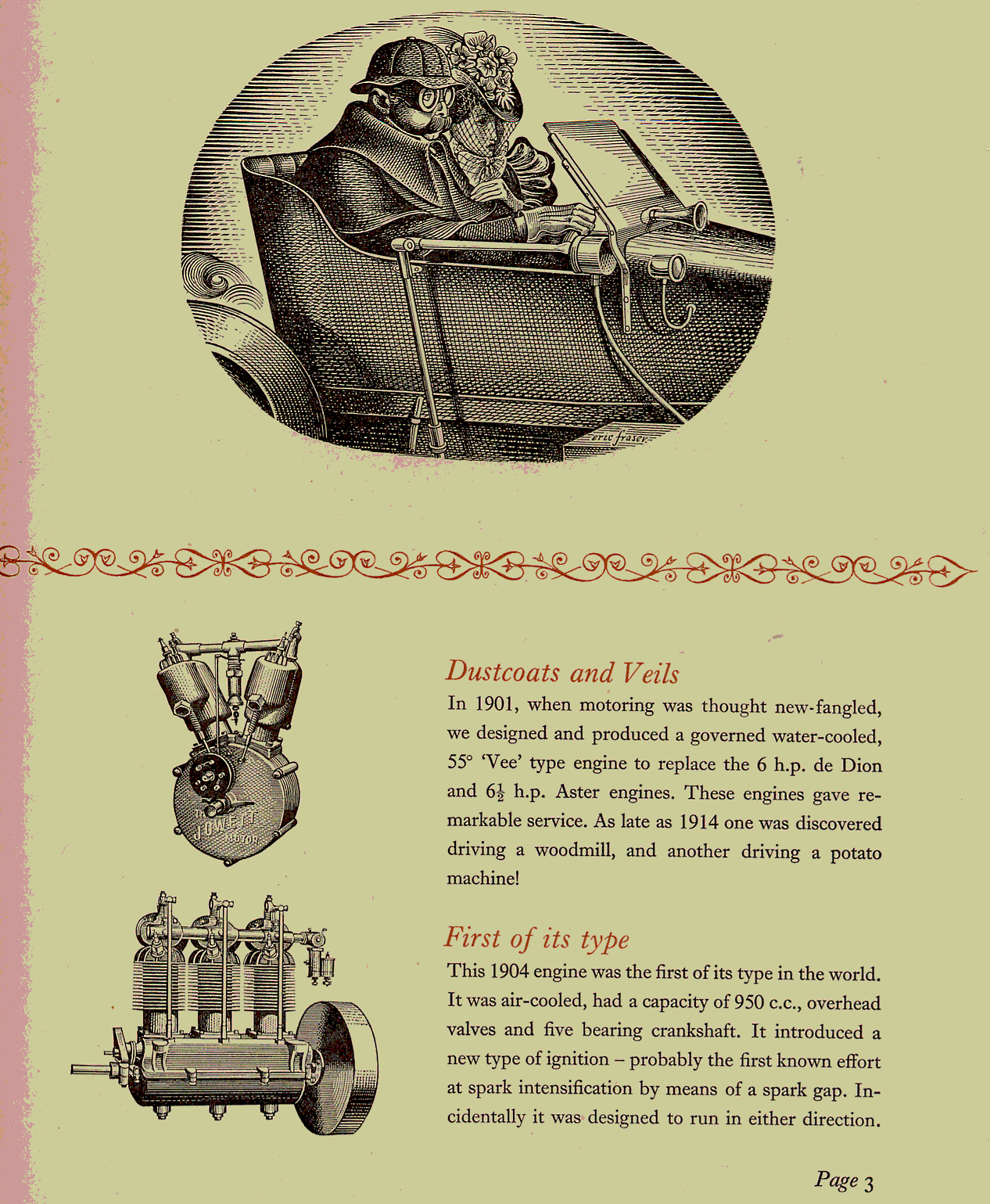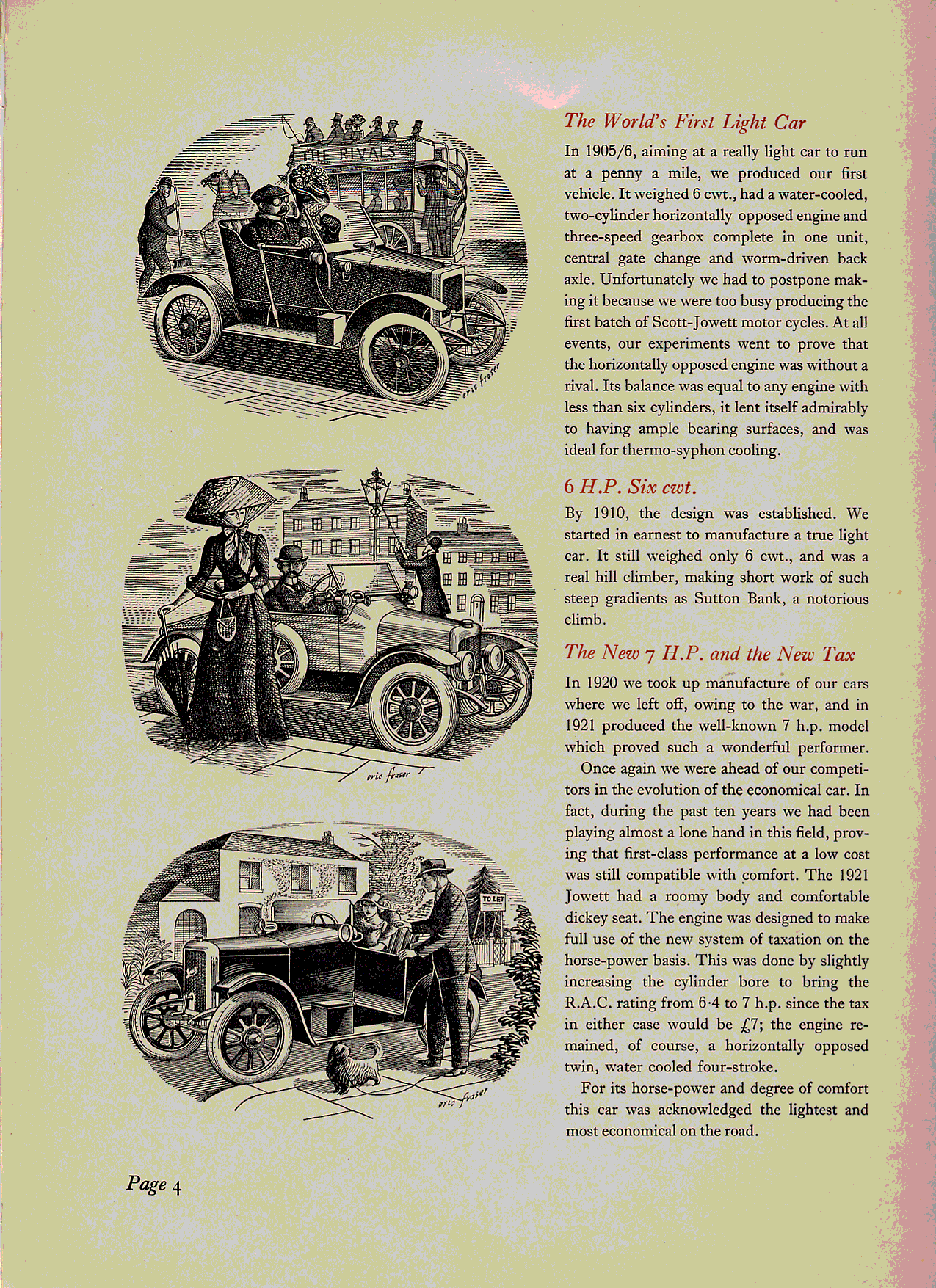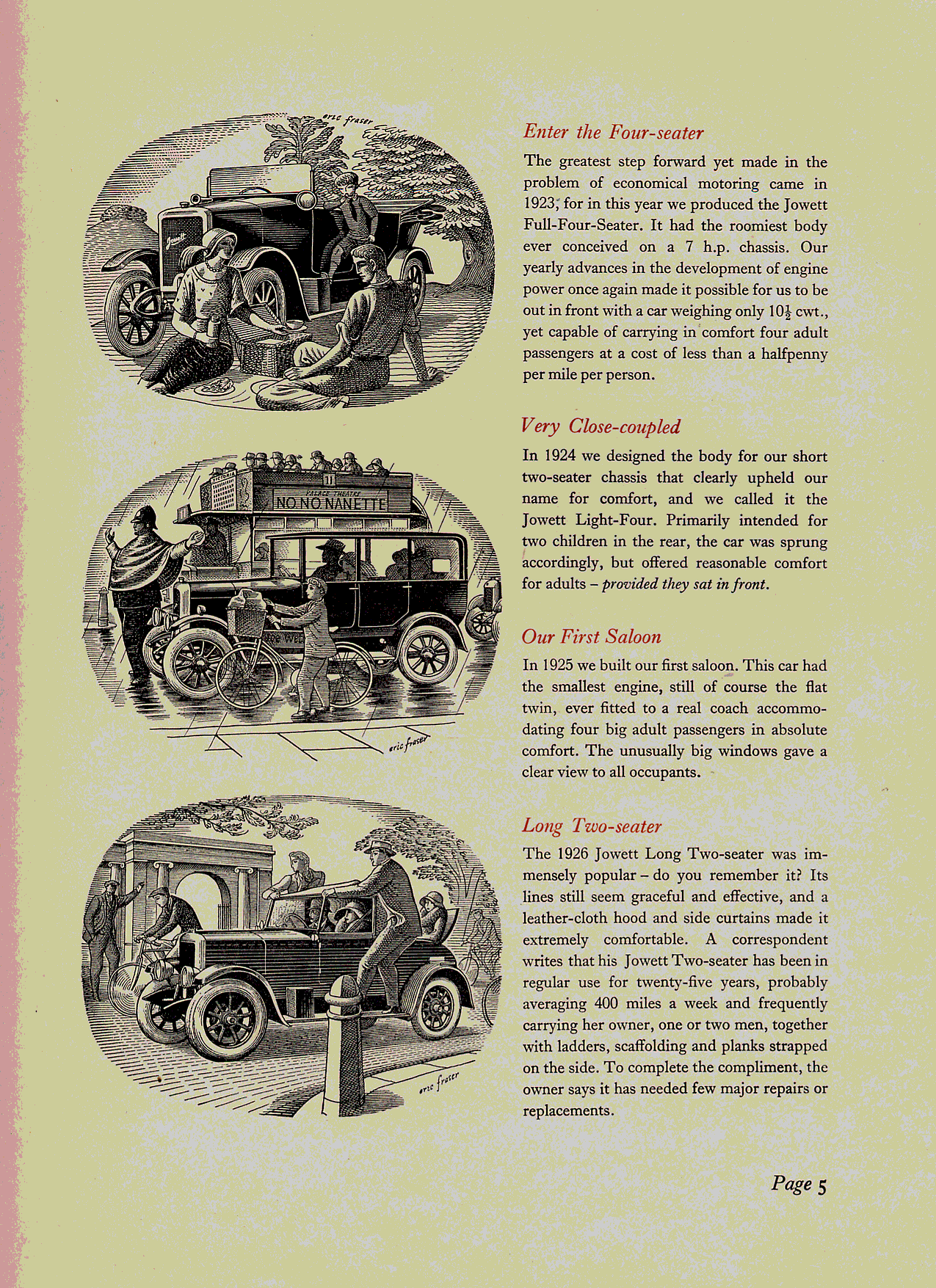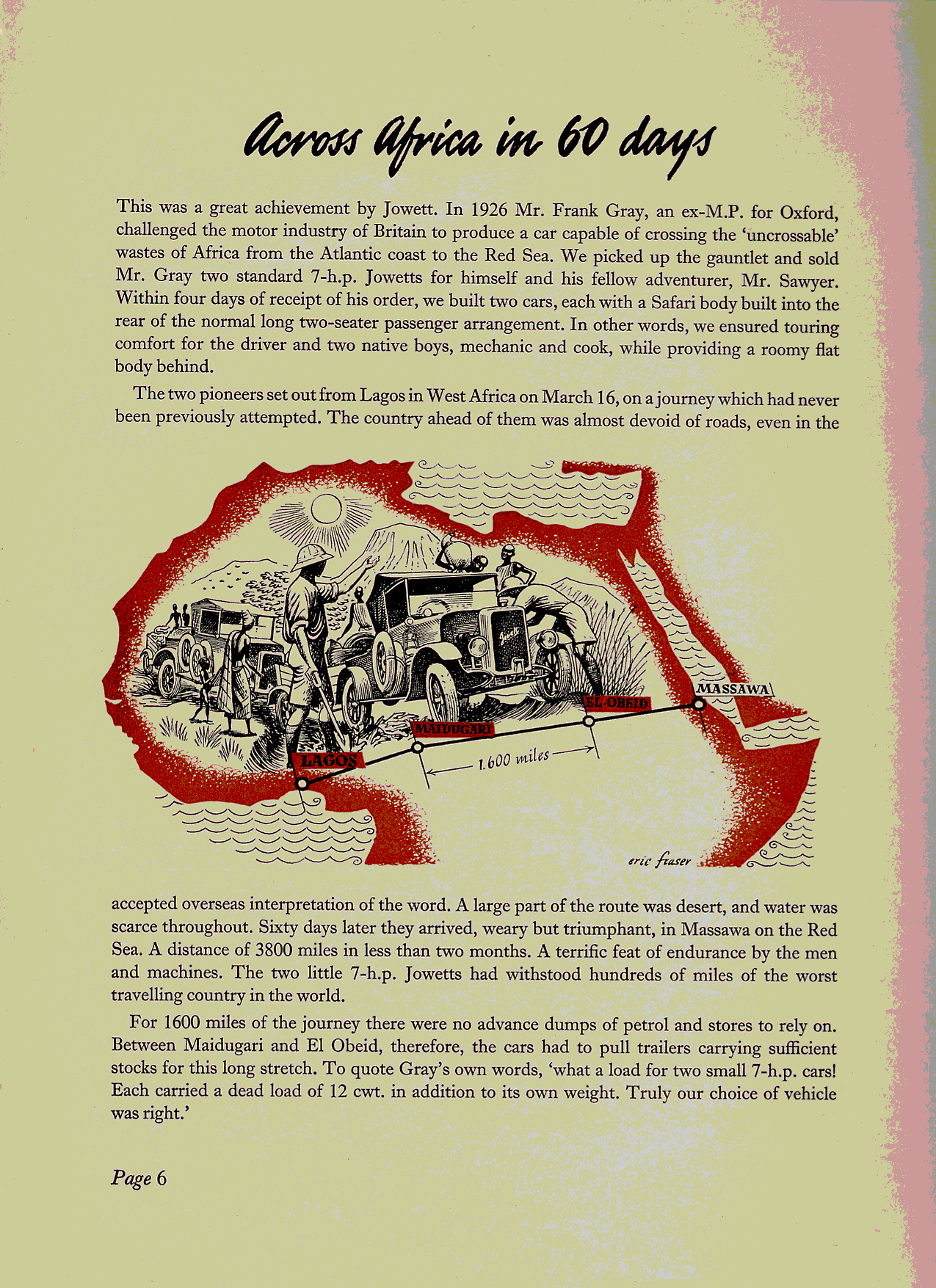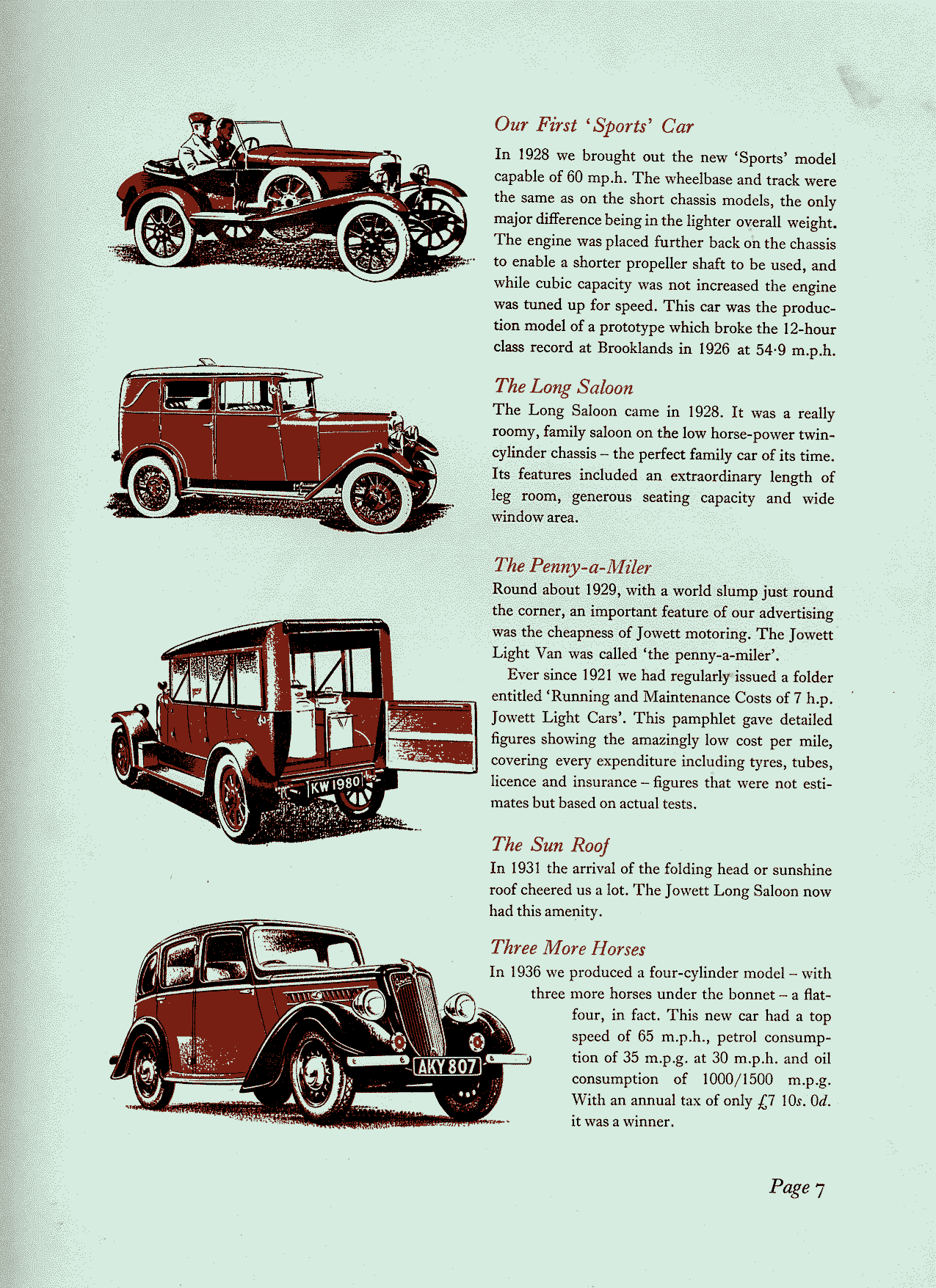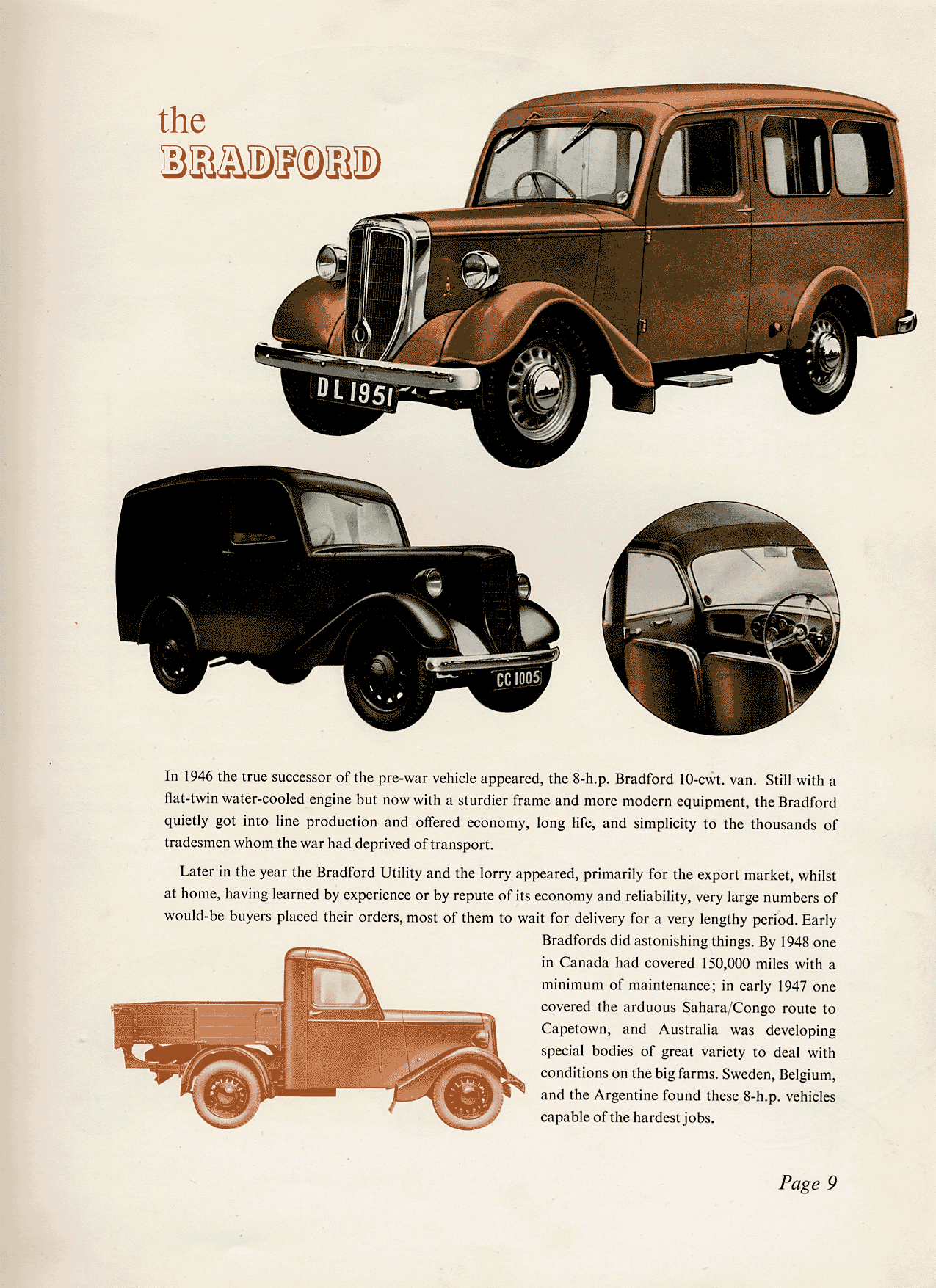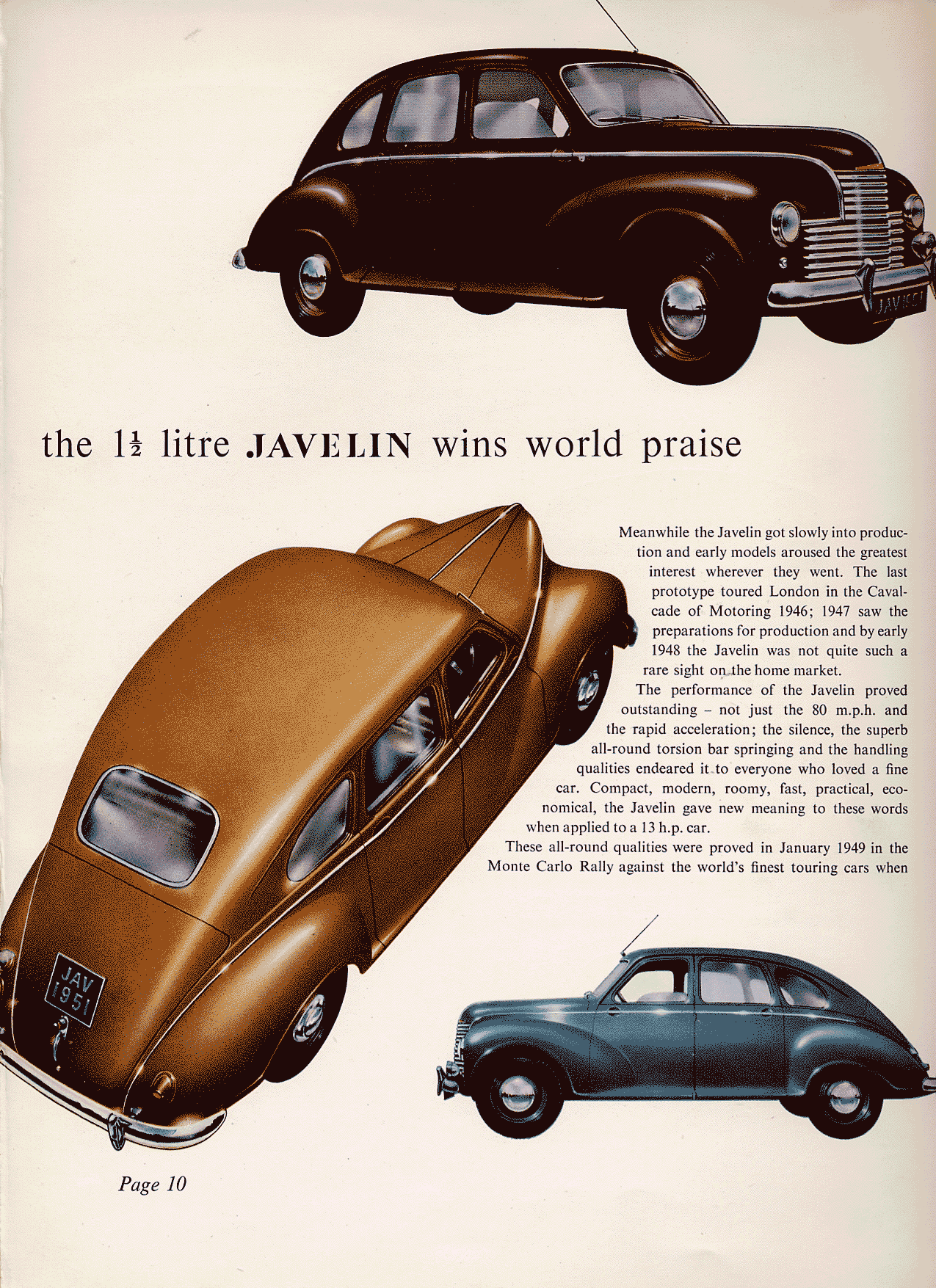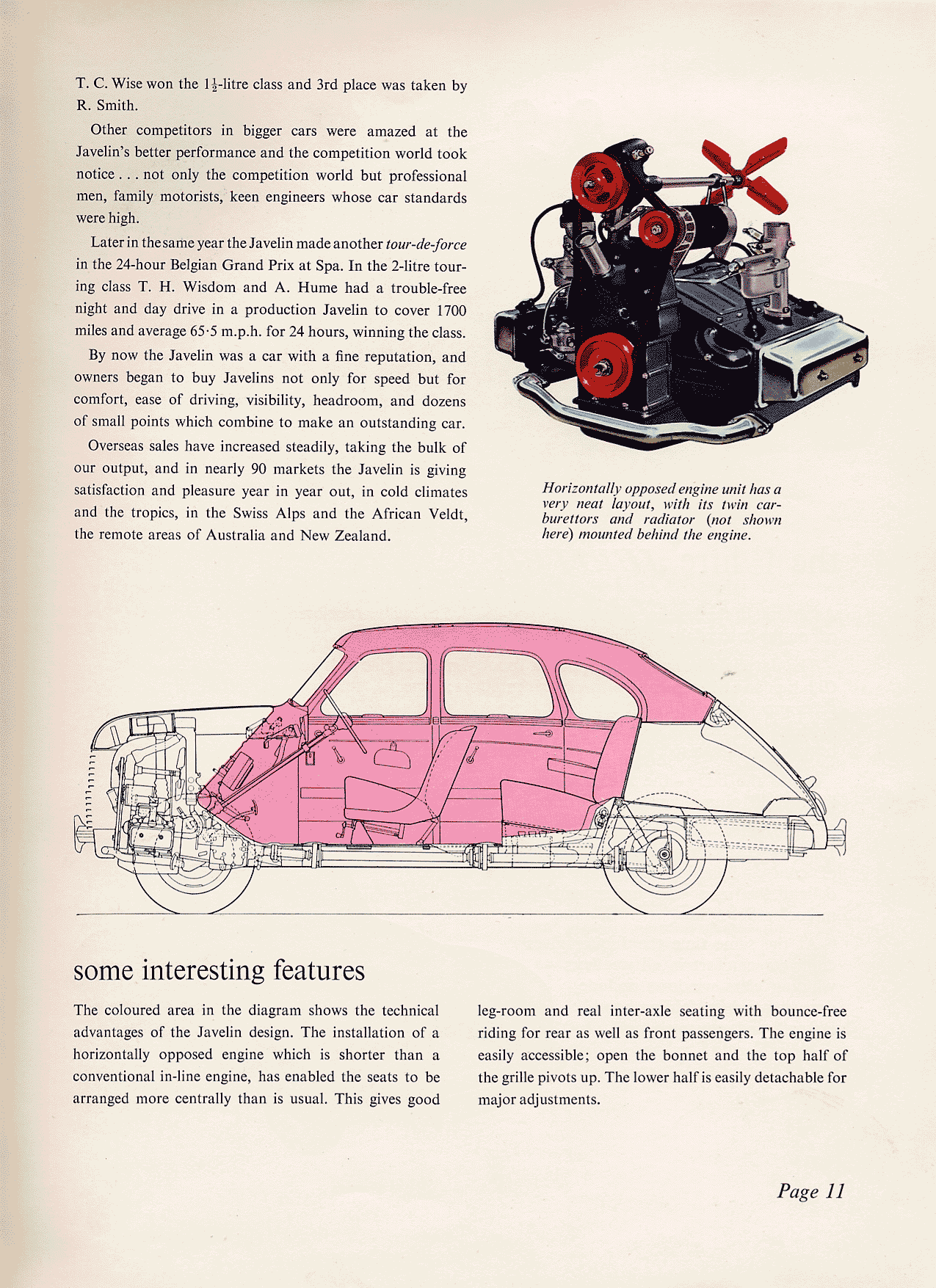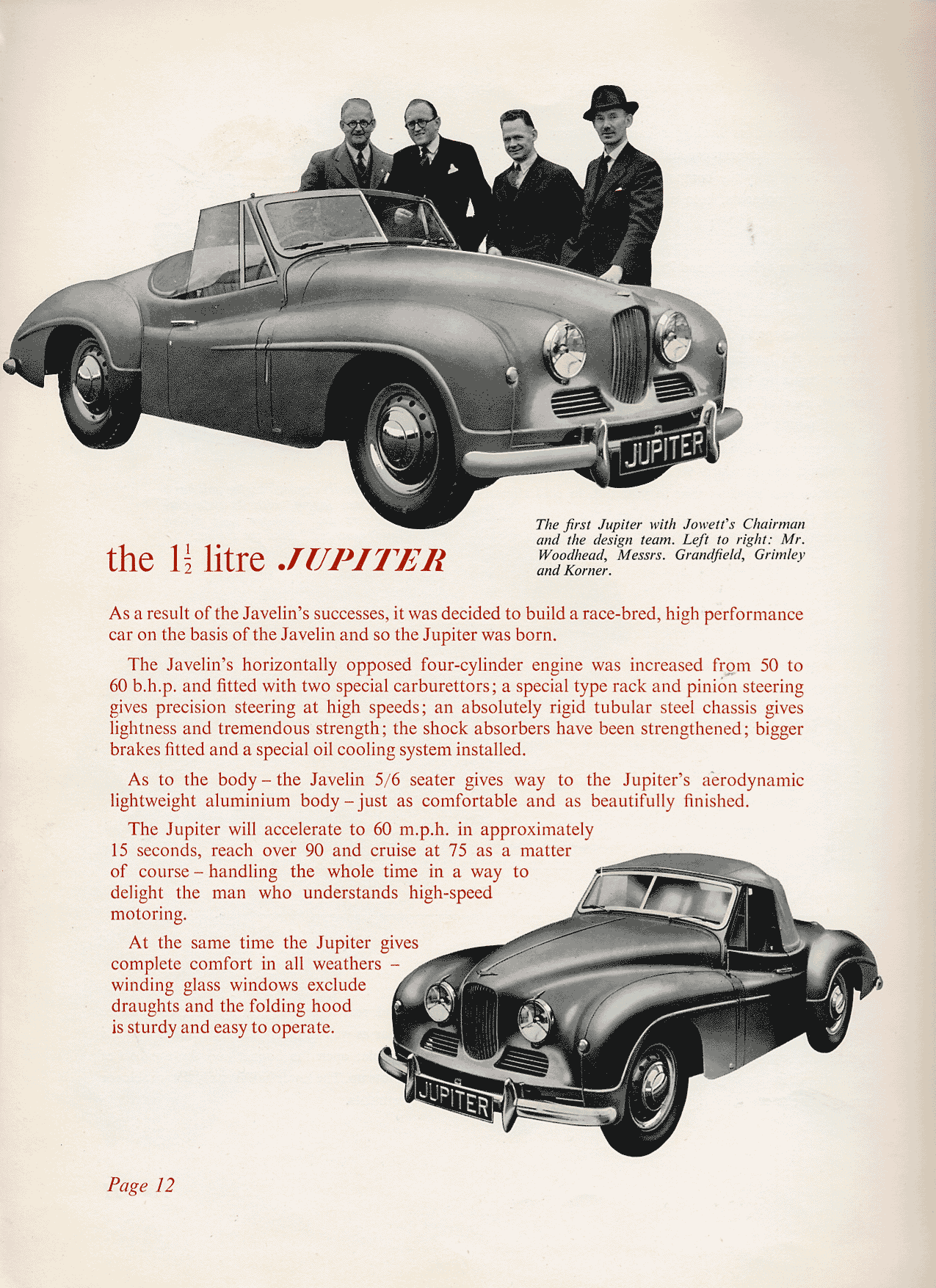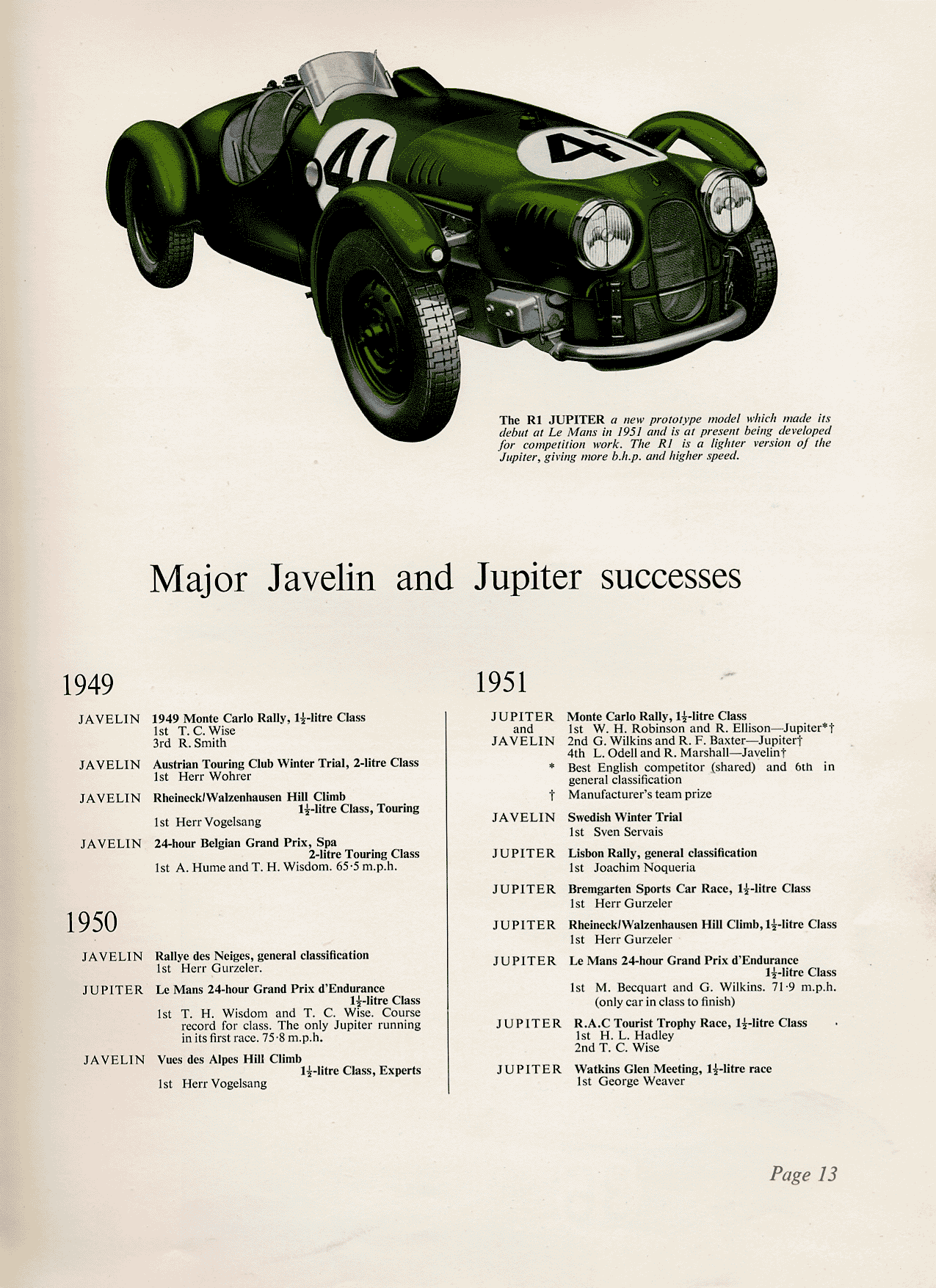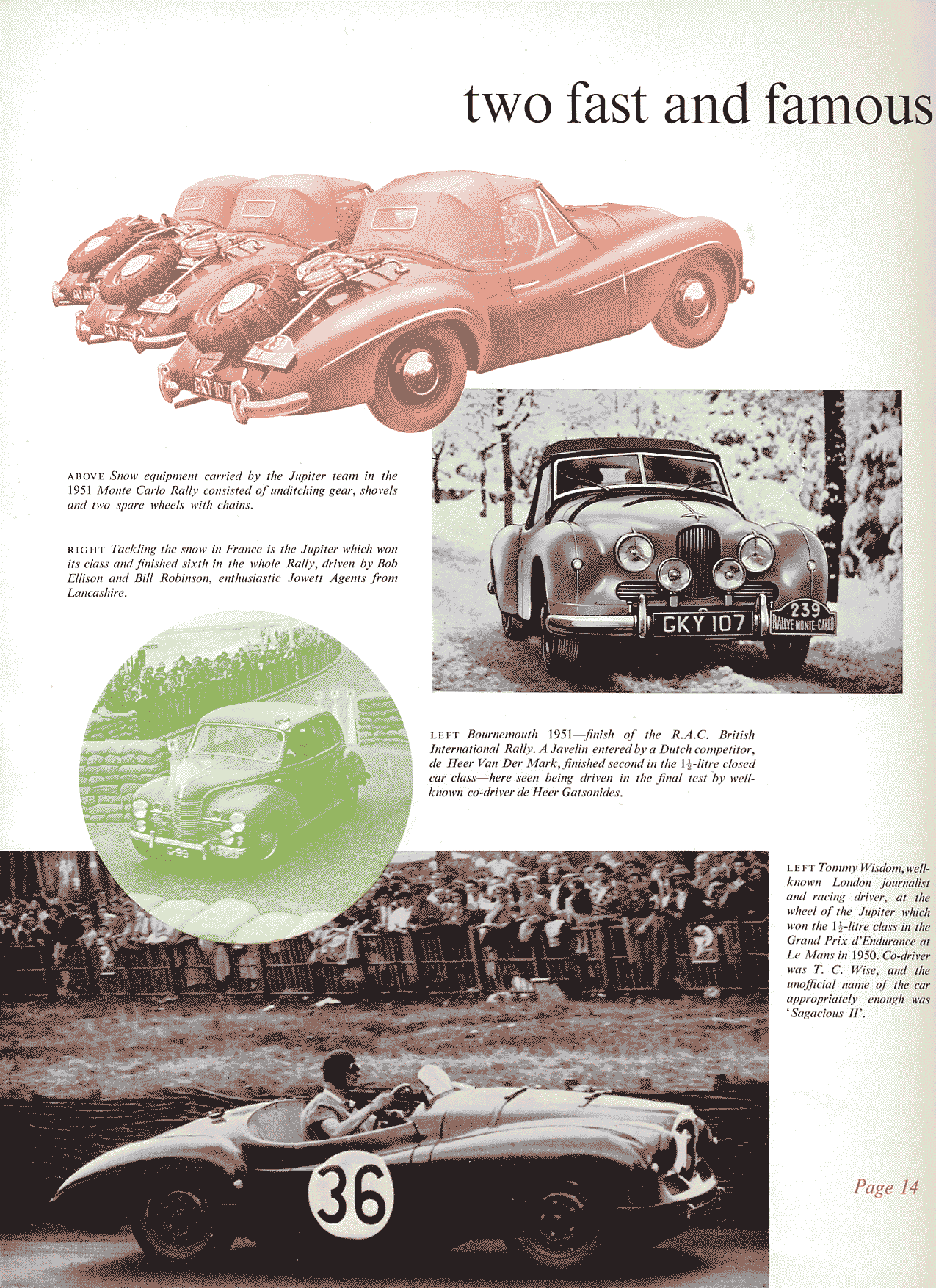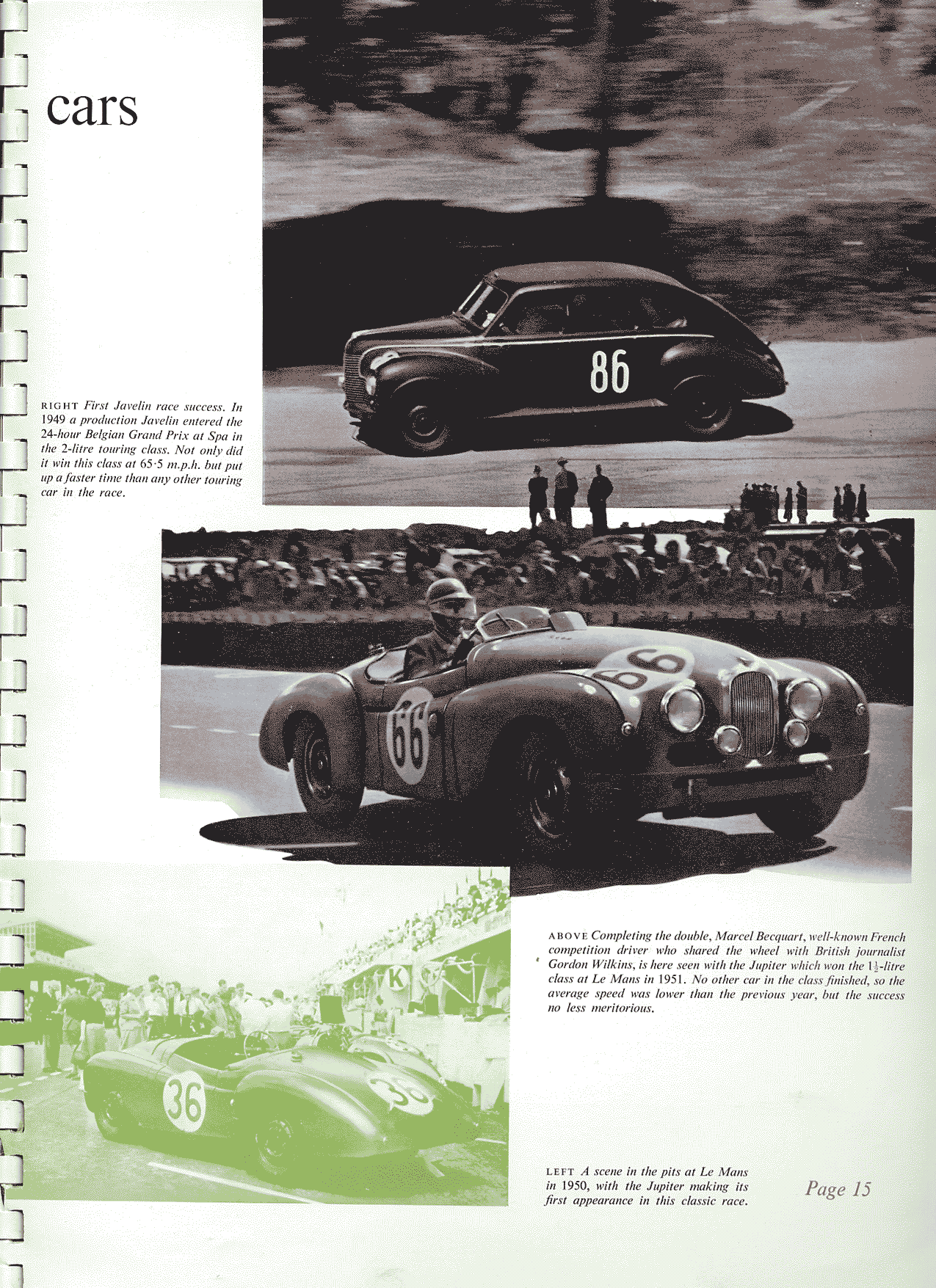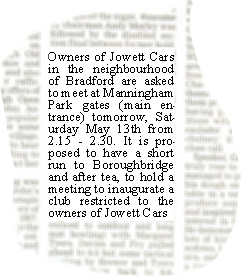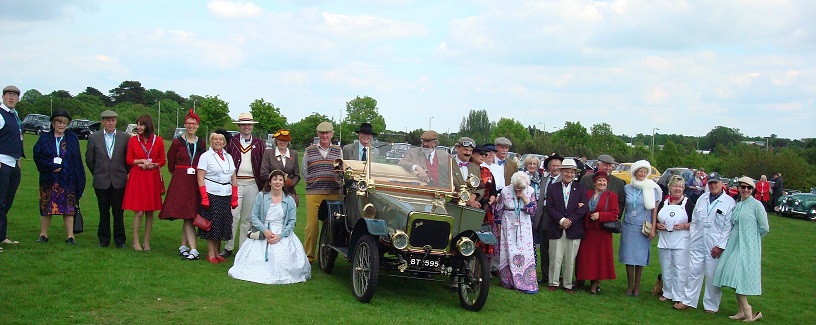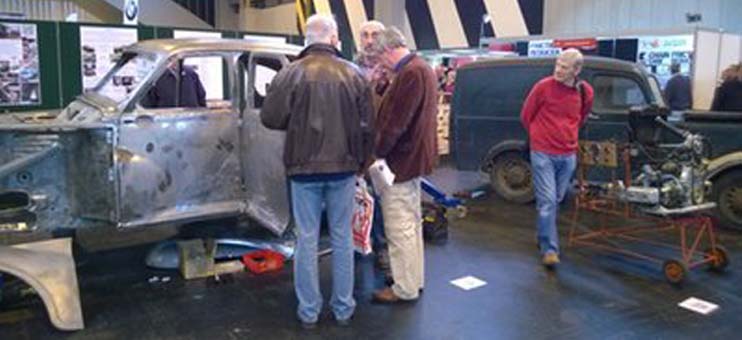Across Africa
Epic journeys seem to be in Jowett's blood. Recently they have also gone across Australia and been coast to coast and back in the USA and from Los Angeles to the Arctic Circle and back. The first instalment of the video is here. A Jowett went back to tackle the desert in Africa in 1998 and the roads around the Baltic in 2012.
The world's oldest one make car club.
An advert appeared in the Bradford Telegraph and Argus on 12 May 1922 causing the formation of the Northern Jowett Car Club. The re-enactment of the first Northern Club run from Bradford Industrial Museum to Boroughbridge took place on 11th August 2013 .
The Southern Jowett Car Club held its first rally on 26 August 1923. See this thread on JowettTalk for details. A re-enactment of the first Southern club run took place to Titsey Hill on Sunday 25th August 2013. See here for details
Only the Southern club survived the war and in 1964 changed its name to the Jowett Car Club and moved from being just a social club bringing together Jowett owners to one supporting the marque.
Regional sections and first aid
The club has regional organisers of meetings. Members can elect to which section they belong. Member Services provides a map so you can find members close to where you are. The map also tells you if the member can help with your model of Jowett or offers services such as towing, parts or repairs.
Light Green = Scotland and Northern
Ireland,
Red = North East,
Purple = North West
Yellow = North,
Dark Green = Midland,
Brown = East Anglia
Dark Blue = Severnside,
Light Blue = South,
Pink = South West,
Orange = Overseas Europe,
Not
Shown = Overseas non-Europe
Annual weekends
The whole club organises weekends together around the U.K. and Europe. Click the picture or button to see what is on.
What's on?Spare parts and technical documents.
A comprehensive spares service for all car models is run by volunteer members. Some spares are also available from the sections or from other members. Email your needs to spares@jowett.org or go to the Spares section of JowettTalk.
Parts books, maintenance manuals, engineering drawings and thousands of other useful documents are available in the Library and Archive.
Join nowRestoration and Maintenance
The club is renowned for its assistance on restoration and maintenance.
Practical
Classics Restoration Show
Lifetime achievement for Drummond Black and Best working stand
2018
Stand and car
of the show 2017
Club of the
Show 2015, Stand of the Show 2014
Best Live Working Stand 2016
see video here
Monthly magazine
Our editor produces a colourful magazine packed with interesting articles and contributions from members. It is available in printed and electronic form.
Over 60 years of these magazines are in the Library and searchable Archive providing a vast resource of Jowett related information.
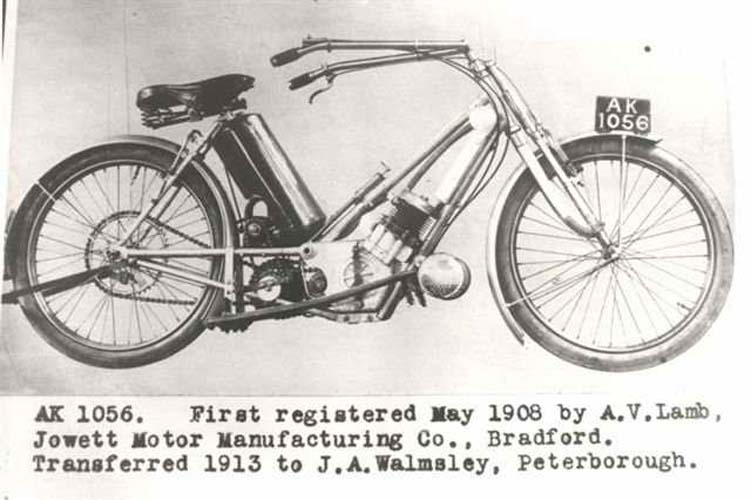
1908 Scott motorcyle
Jowett produced the first Scott motorcycles. They also made engines for other cars, before eventually making and running a prototype complete car for four years.
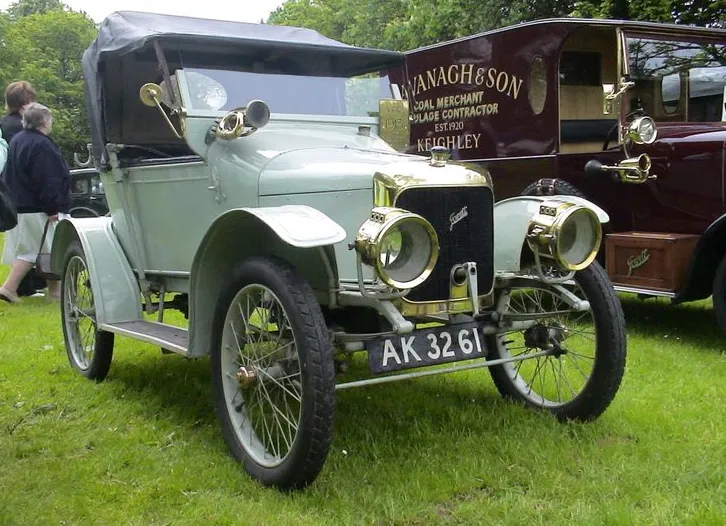
1913 Tiller steering
6.4 hp 816 cc (831 cc from 1914)side-valve flat twin water-cooled, 2-seater, 48 produced 1906–1914. Three speed gearbox. 1913 6.4h.p. Price new: Approx; £145 In 1906 the Jowett Brothers Benjamin and William, manufactured their first prototype car. This was tested until 1910 when production started. Only 6 cars were built between 1910 and 1912, until the 6.4hp engined car was advertised as an 8hp. Jowett retained tiller staring until 1914, being one of the last British manufacturers to change to wheel steering.
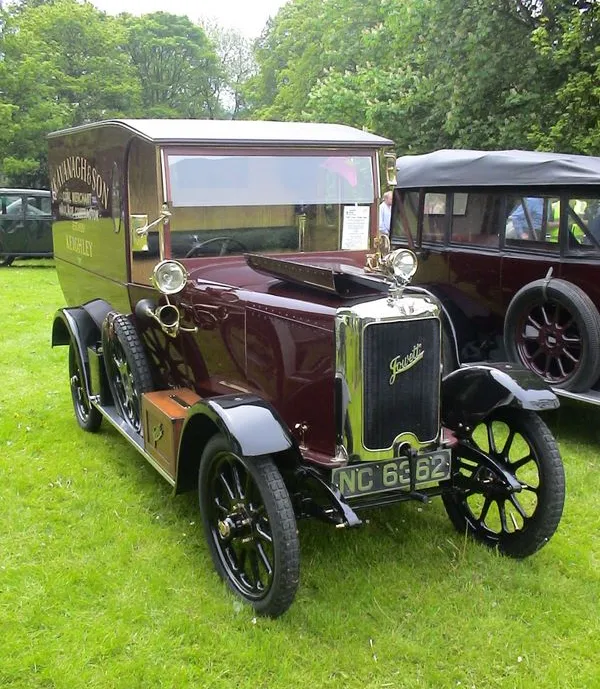
1923 7hp (5cwt) Cab Van
Price new: Approx. £200 By 1920 the Jowett factory had moved from Manningham to Idle and vehicle manufacture became the sole activity of the newly formed Jowett Cars Ltd. The engine capacity was increased to 7hp and the range added commercials in 1922 and long tourers in 1923. This example shows the large carrying capacity for such a small engined vehicle. The twin cylinder horizontally opposed etrgine was ideal for commercial purposes, being reliable, economical, requiring minimum maintenance and had enough power and torque to overcome the Yorkshire hills. Commercial vehicles of all types became more and more important to Jowett through the years to 1953 and this was one of the first.
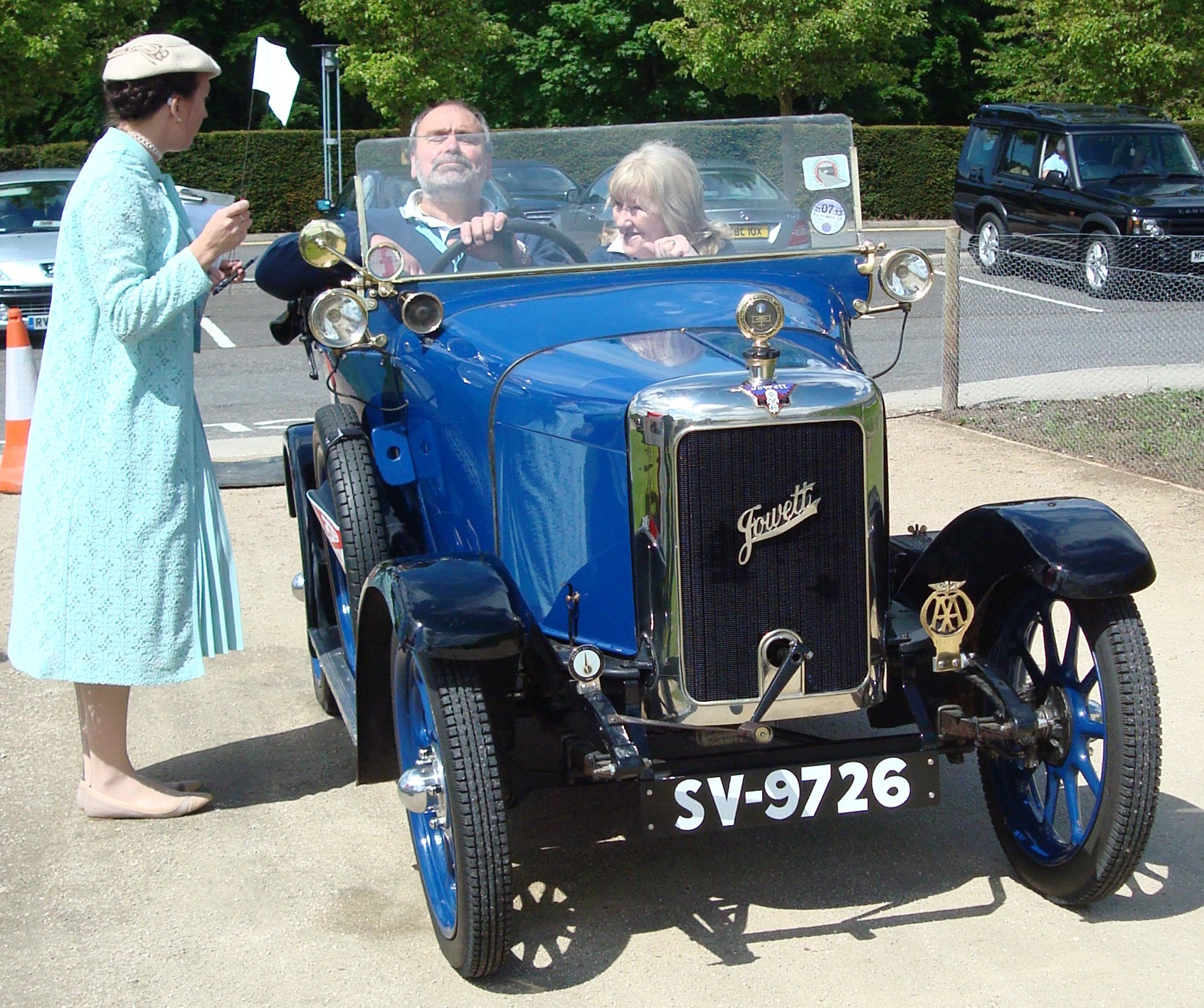
1924 Short 2
7 hp 907 cc side-valve flat twin, 11,444 (inc Long 7) produced 1919–1930, 2-door fabric saloon, 2-door coachbuilt saloon Three speed gearbox. Four wheel brakes from 1930. 84 in (2,100 mm) wheelbase.
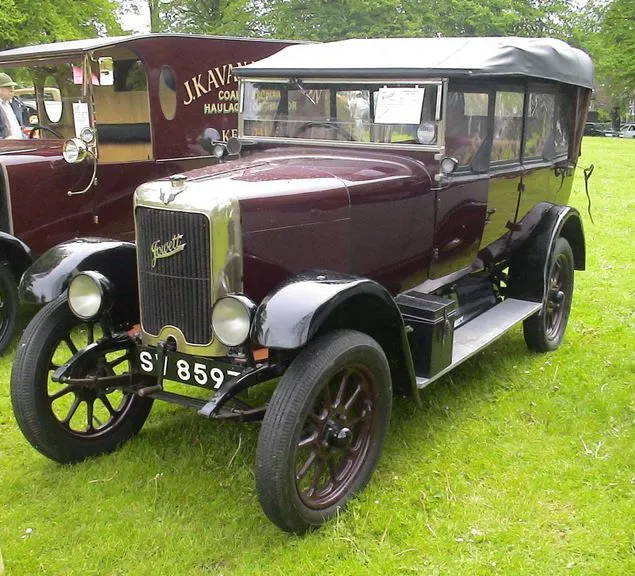
1927 Long 4 Tourer
Price new: Approx. £150 Pre-World-War ll production for Jowett Cars Ltd peaked in 1927 at 3474 vehicles produced. Prices were beginning to fall due to lower raw material prices, mass production and more competition from larger rival companies. Jowett’s main product throughout the latter 1920’s was the long wheelbase, 4-seat tourer, but by 1929 the comfort of saloon cars was making them more popular.
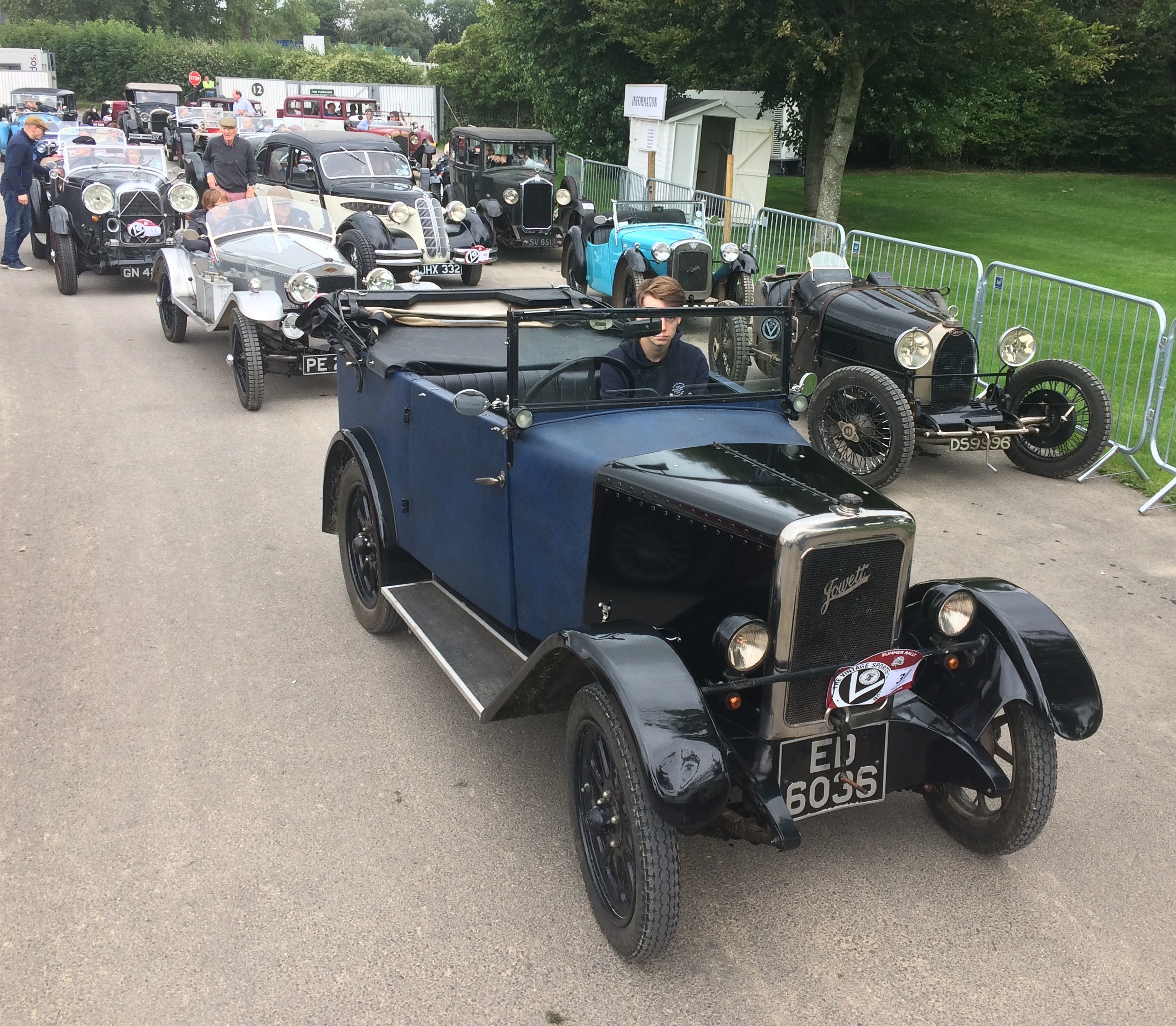
1930 Economy
7 hp 907 cc side-valve flat twin. 11,444 (inc Short 7) produced 1930-36, 102 in (2,600 mm) wheelbase. 12-volt electrics from 1933. Four-speed gearbox from 1934. Twin carburettors on the Weasel. 2-seater, sports tourer, 4-door fabric saloon, Kestrel coachbuilt saloon, Black Prince, Silverdale and Grey Knight de-luxe saloons, Simba tourer, Weasel sports tourer.
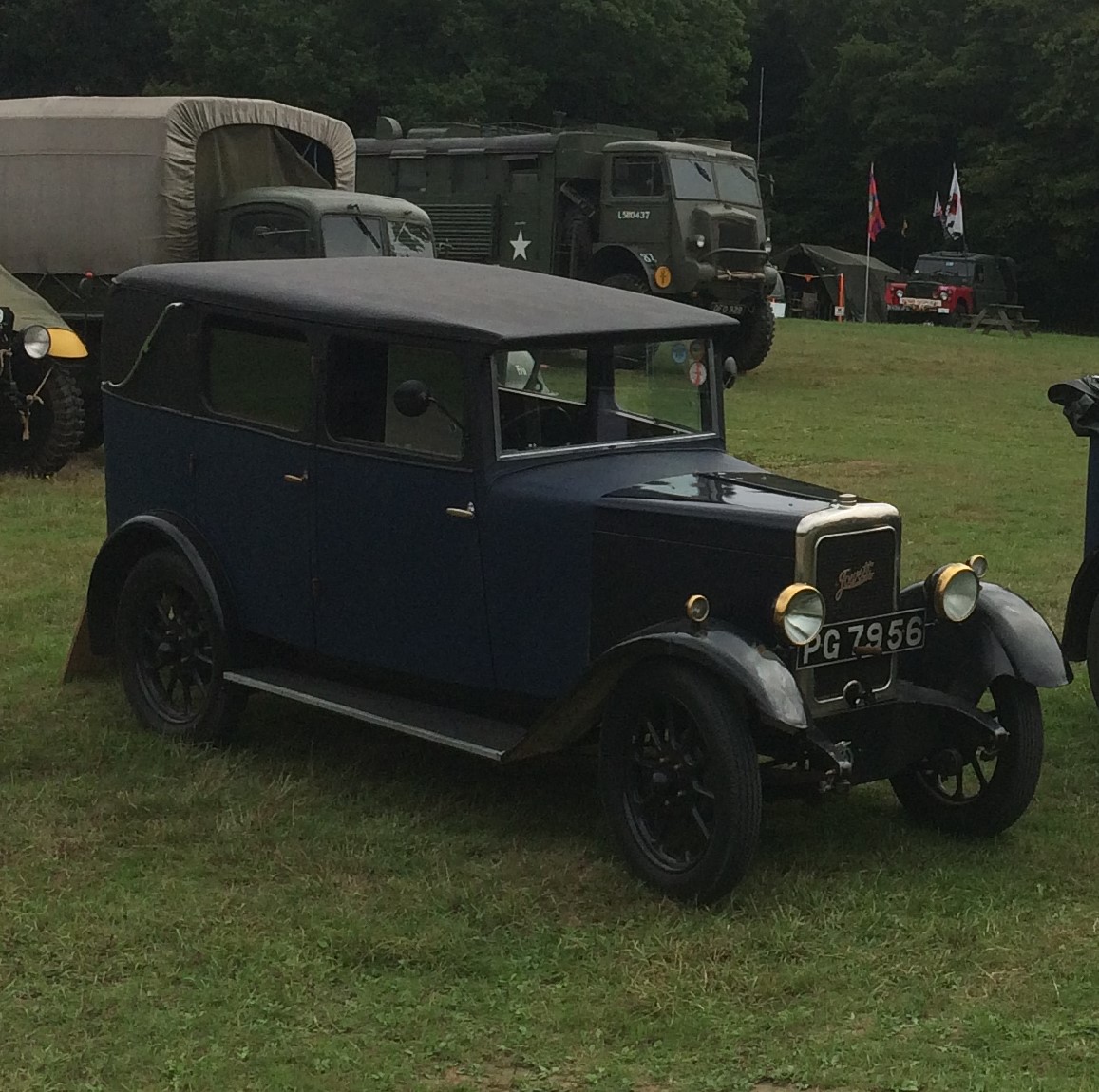
1930 Long 4
7 hp 907 cc side-valve flat twin. 11,444 (inc Short 7) produced 1930-36, 102 in (2,600 mm) wheelbase. 12-volt electrics from 1933. Four-speed gearbox from 1934. Twin carburettors on the Weasel. 2-seater, sports tourer, 4-door fabric saloon, Kestrel coachbuilt saloon, Black Prince, Silverdale and Grey Knight de-luxe saloons, Simba tourer, Weasel sports tourer.
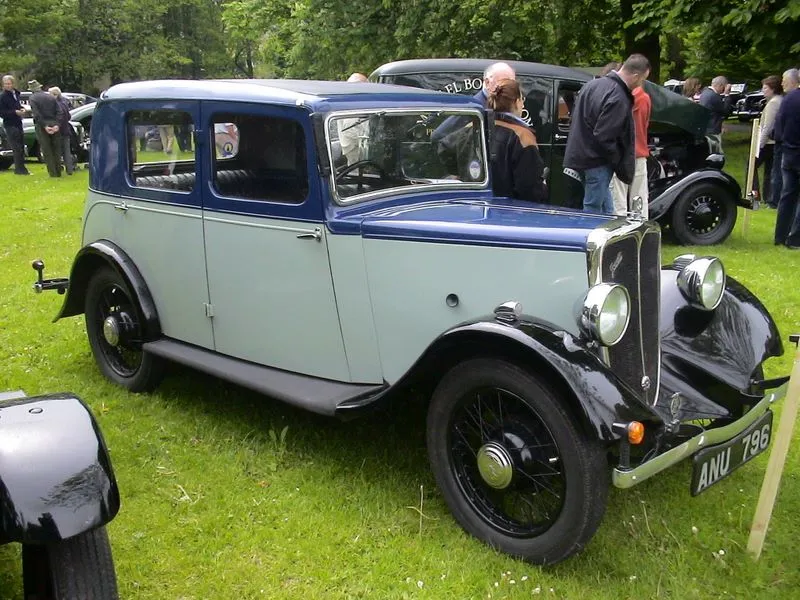
1934 7hp Kestrel
Price new: Approx. £175 Jowett introduced the Kestrel in 1933 and by 1936 they had built 2635 examples, making it the most popular pre-war model. Still using the 7hp twin cylinder engine, there was by now more instrumentation such as semaphore direction indicators, brake lights and a petrol gauge. The accelerator pedal was now on the right as opposed to being in the centre on vintage (pre-1931 models). By now all models except commercials had 12 volt electrics and a four speed gearbox.
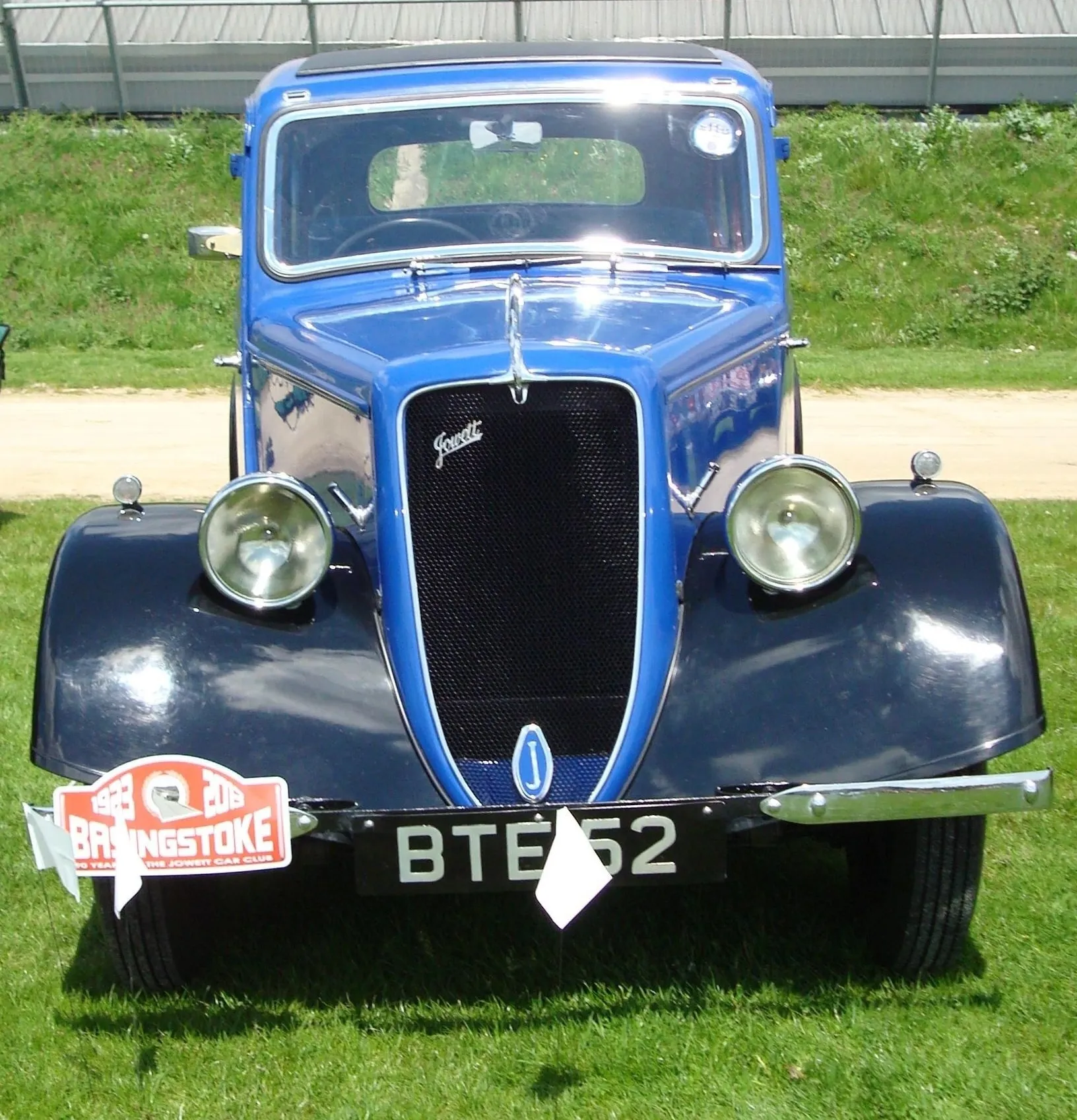
1937 Jowett Eight
946 cc side-valve flat twin saloon, 2888 produced 1937–1940.
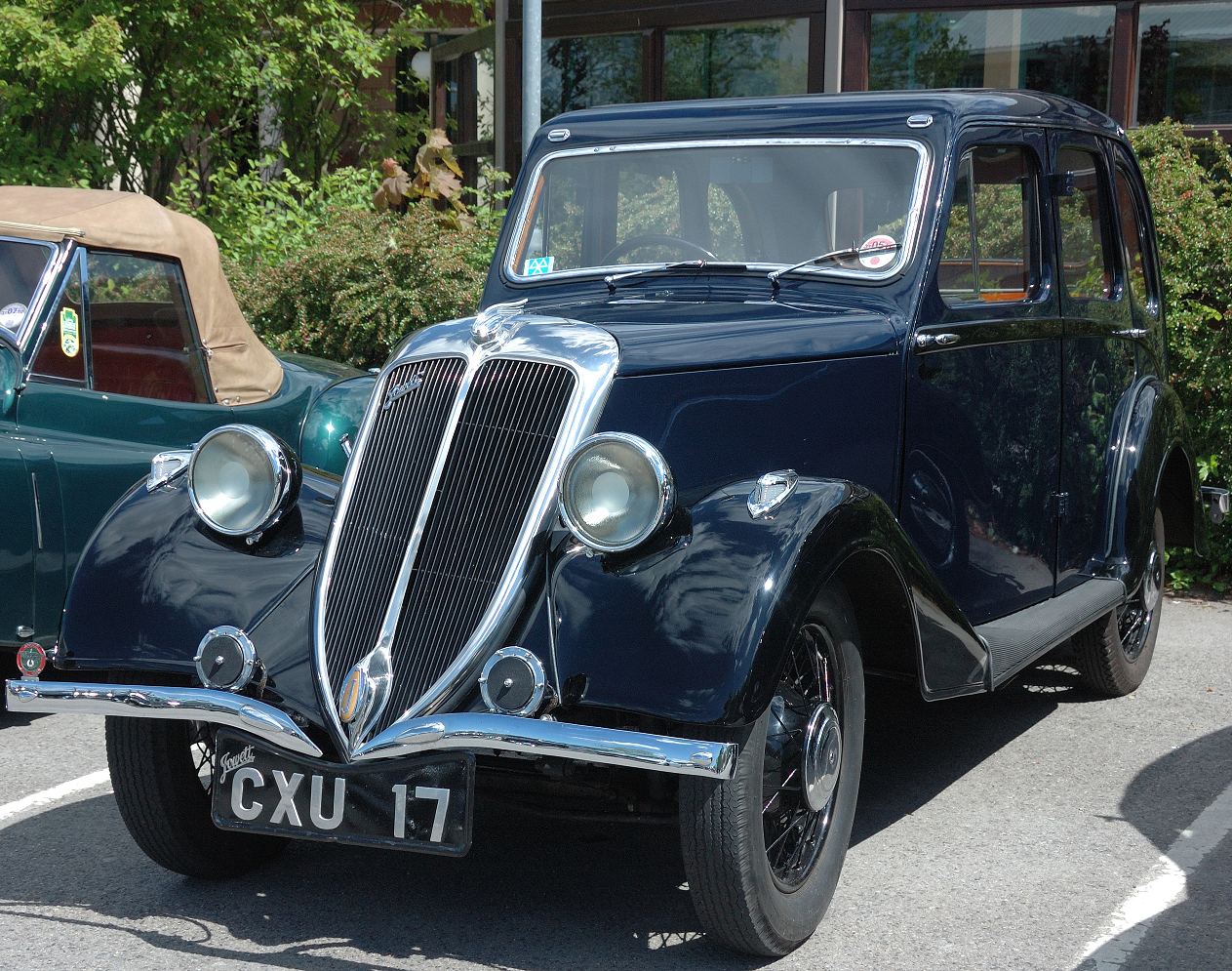
1937 Jowett Ten
1166 cc side-valve flat four, saloon (Jupiter, Jason, Plover and Peregrine), van, 1881 produced 1936–1940, Twin carburettors up to 1937.
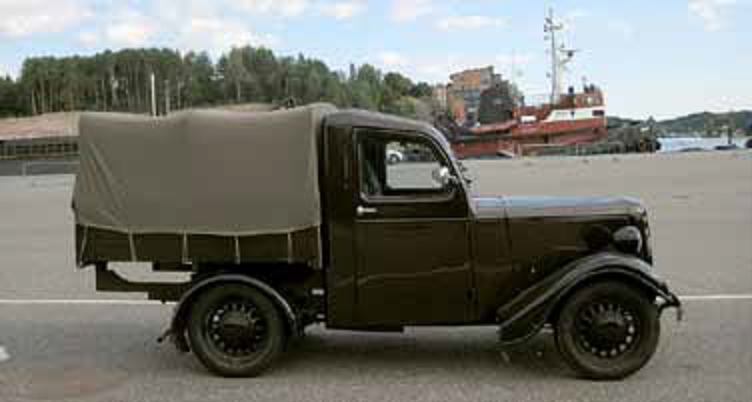
1951 Bradford
Jorma Hihnala from Finland. 1005 cc side-valve flat twin, light truck, van and utility. Three speed gearbox. Price new: Approx. £385 + tax Immediately after World-War ll Jowett launched their Bradford range. Van, Lorry, Utility, Utility Deluxe versions were available, and it also supplied as a chassis-cab to specialist coach builders to fit custom designed bodywork such as ice cream vans. The Bradford retained (albeit enlarged again) the twin-cylinder horizontally opposed engine making it, at the time, the longest production engine (1910 — 1953). The Bradford was the mainstay of the post-war production and was very popular with tradaspeople. Many were exported, the total production (1946 - 1953) being approximately 38,241. However, production still on pre-war lines was labour intensive. The successor. the "CD“, Bradford, of which 18 prototypes were built was too late.
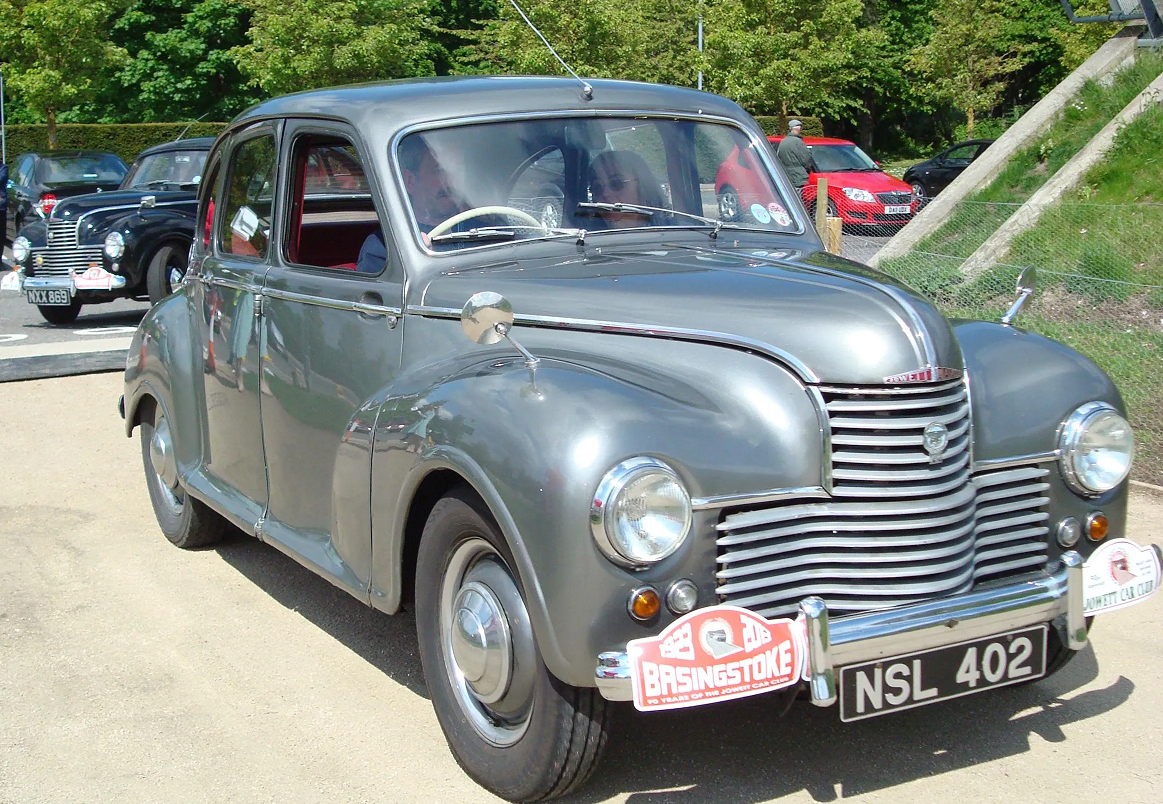
1952 Jowett Javelin
1486 cc overhead-valve flat four saloon, 23,307 produced 1947-1953, Class win, 1949 Monte Carlo Rally. Class win, 1949 Spa 24-hours race. Outright win, 1953 International Tulip Rally. Class win, 1952 and 1953 RAC Rally. Price new: Approx £735 + £409 tax This, the most recognised of all Jowetts, was designed by Gerald Palmer during the latter part of the second World-War and was first sold in 1948. It was the first all-new British car after the war, and the first to use a curved windscreen. It has a flat four cylinder overhead valve engine of 1486cc, independent front suspension and many other features years ahead of its time. It will seat 5 (6 if they are friendly!) and had excellent performance and economy for the period. (80mph top speed and fuel economy of 30 mpg). Unfortunately the Javelin came to market at an austere time and was not cheap. The annual sales target of 5000 was never achieved and some technical problems with the crankshaft. and gearbox caused sales to stall. The problems were. all resolved, but as the bodies had been out-sourced to Briggs of Doncaster (who had meanwhile, been acquired by Ford) resumption was not possible. Jowett Cars was wound up and the factory sold to International Harvester and all creditors fully paid out.

1954 Jowett Jupiter SC
1486 cc overhead-valve flat four convertible, 900 produced 1950–1954. Tubular semi-space frame, hydraulic brakes. Class-winner at 1950 24 Hours of Le Mans in its first race. Also, outright win of the 1951 Lisbon International Rally and class win at Le Mans in 1951. Price new: Approx . £1300 inc. tax Due to the competition success of the Javelin, the Jupiter sports model was developed for 1950. It has a tubular steel chassis and a developed Javelin engine, increasing the brake-horsepower from 52.5 to 62.5. Standard models could reach almost 90mph. Most of the first few Jupiters were sold in chassis form to outside coach builders. Later light weight and special bodied works racing cars were built in order to compete on the racetrack. This they did most successfully, amongst other achievements, winning the 1.5 litre class in 1950, 1951 and 1952. They failed to help the company's finances in any way. However, today they are the most sought after and valuable Jowett car.

1952 Jowett R1
In 1952 the sports-racing variant Jupiter type R1 won its class at Le Mans.

1953 Jowett R4
1486 cc overhead-valve flat four sports, 3 produced 1953. Body fabric reinforced plastic. Never reached production. Top speed 100 mph (160 km/h)
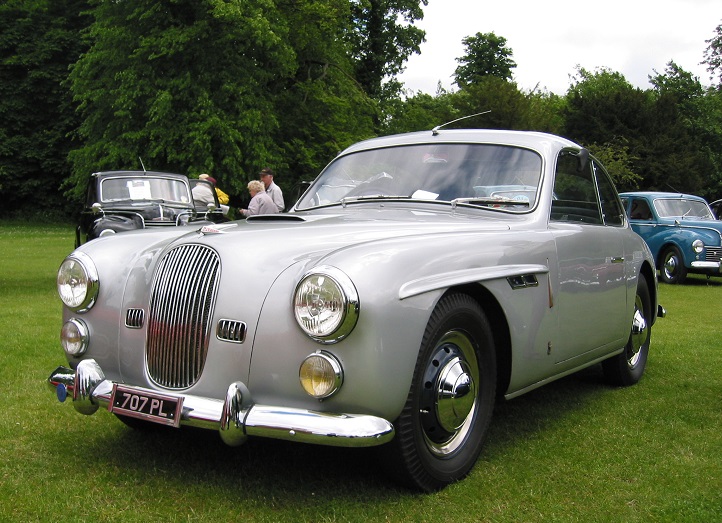
Coachbuilt Farina
Some 67 Jupiter supplied as chassis to independent coach builders such as Pininfarina, Ghia Suisse, E. D. Abbott Ltd, Harold Radford.
